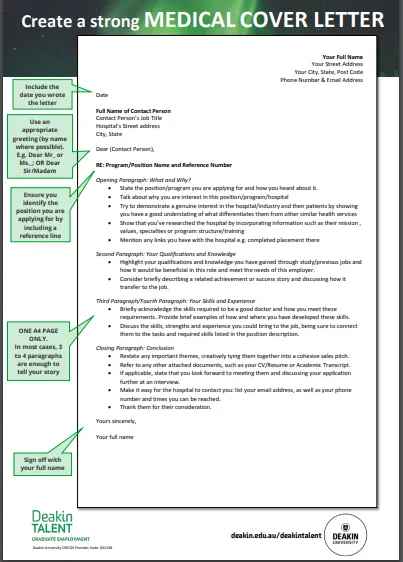Understanding the Medical Cover Letter
A well-crafted medical cover letter is crucial for making a strong first impression and securing your desired position in the healthcare field. It serves as your introduction, providing an opportunity to highlight your qualifications, experiences, and passion for healthcare. Unlike a resume, which provides a factual overview of your career, a cover letter allows you to tell your story and demonstrate why you are the ideal candidate. This guide will provide you with essential tips and examples to create a compelling medical cover letter that stands out from the competition. Mastering the art of the medical cover letter can significantly increase your chances of landing an interview and ultimately, your dream job.
What is a Medical Cover Letter?
A medical cover letter is a formal document that accompanies your resume when you apply for a job in the medical field. Its primary purpose is to introduce you to a potential employer, explain your interest in the position, and highlight your relevant skills and experiences. It should be tailored to each specific job application, showcasing your understanding of the role and the organization’s needs. The best medical cover letters are concise, compelling, and personalized. They should reflect your unique qualifications and enthusiasm for the opportunity, setting the stage for a positive first impression. Always remember to check your cover letter for grammar, spelling and avoid any jargon that may not be understood.
Why is a Medical Cover Letter Important?
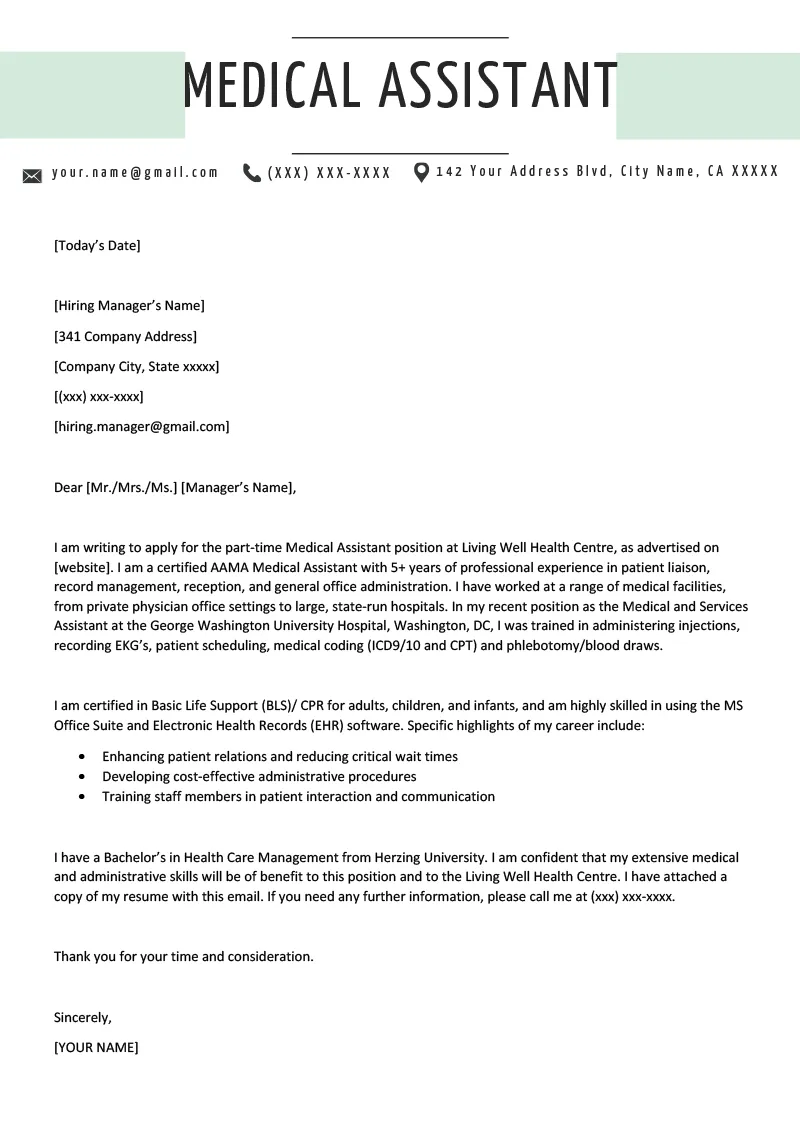
The medical field is competitive, and a cover letter provides you with the opportunity to differentiate yourself from other candidates. It allows you to go beyond the bullet points of your resume and provide context and personality. A well-written cover letter demonstrates your communication skills, attention to detail, and understanding of the role. It shows that you have taken the time to research the organization and are genuinely interested in the position. Ignoring the cover letter means missing out on one of the most important tools when searching for a medical position. It allows you to showcase your passion for healthcare, explain career gaps, or address any concerns a potential employer might have. It can also clarify your career goals and how they align with the organization’s mission. For many employers, the cover letter is the first document they read, making it your opportunity to make a positive and lasting impression.
Top 5 Tips for Writing a Medical Cover Letter
Writing a compelling medical cover letter can be simplified by following these top 5 tips. These tips will help you to tailor your letter to each job application and showcase your strengths effectively. Remember that each medical position has its own requirements and qualifications, so tailoring your cover letter is important. By following these guidelines, you can create a cover letter that is concise, professional, and makes a strong impression on potential employers, increasing your chances of landing an interview. The key is to present yourself as the ideal candidate for the job.
Tip 1 Highlight Your Relevant Skills and Experience
Your medical cover letter is your chance to showcase your most relevant skills and experiences. Carefully review the job description and identify the key requirements and qualifications. Then, select the experiences and skills from your background that align with these requirements. Be specific and provide examples of how you have demonstrated these skills in previous roles. Instead of simply listing your skills, describe how you used them to achieve specific results. This is an opportunity to demonstrate your value to the potential employer and show that you can perform the job. Include specific achievements with concrete examples, such as ‘Managed a team of ten nurses, resulting in a 15% increase in patient satisfaction’ or ‘Implemented a new patient intake system, reducing waiting times by 20%’.
How to Tailor Your Skills to the Job Description
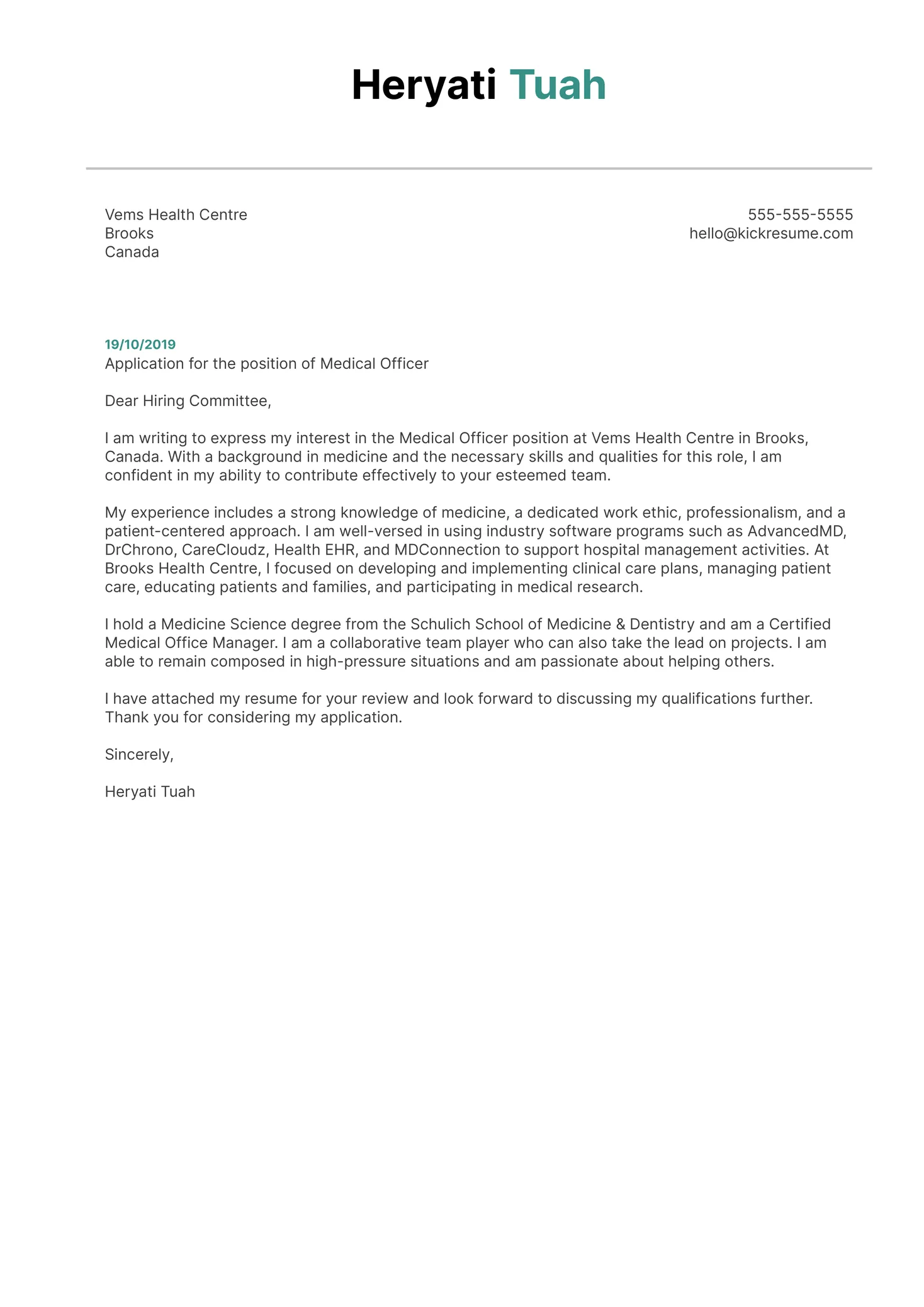
Tailoring your skills to the job description involves carefully analyzing the requirements and matching your experiences and abilities to those needs. Start by reading the job description thoroughly, noting the key skills, qualifications, and experiences the employer is seeking. Next, review your own skills and experiences and identify those that directly align with the job requirements. Give specific examples of how you have demonstrated those skills in the past. When you tailor your skills, you show the employer that you understand their needs and have the specific abilities to meet them. Remember to use keywords from the job description to show that you have the right skills, and that you have experience in the medical field.
Tip 2 Showcase Your Passion for Healthcare
Demonstrating your passion for healthcare is crucial in a medical cover letter. Healthcare professionals are often chosen based on their passion and dedication to the industry. Expressing your enthusiasm can set you apart. This can be achieved by discussing why you are drawn to the field, what aspects of healthcare interest you most, and how your values align with the organization’s mission. It’s essential to convey your genuine interest in helping patients and contributing to a positive healthcare environment. For example, you might mention your previous volunteer work at a hospital or your involvement in medical research. Share your personal experiences. This might include a story about a positive experience you had with a healthcare provider or a challenging situation you overcame in your career.
Demonstrating Your Commitment to Patient Care
Highlighting your commitment to patient care is essential in your cover letter, as it reflects your dedication to providing high-quality healthcare. Patient care is the heart of medicine, so demonstrating this commitment can make a strong impression on potential employers. Provide examples of how you have prioritized patient needs in previous roles. Mention specific actions you have taken to improve patient outcomes or enhance the patient experience. Share any training or certifications you have that showcase your commitment to patient care, such as certifications in patient advocacy, or advanced care training. It’s crucial to show the employer that you prioritize the well-being of patients and understand the importance of providing compassionate and effective care. By focusing on patient care, you demonstrate your dedication to the medical field.
Tip 3 Quantify Your Achievements
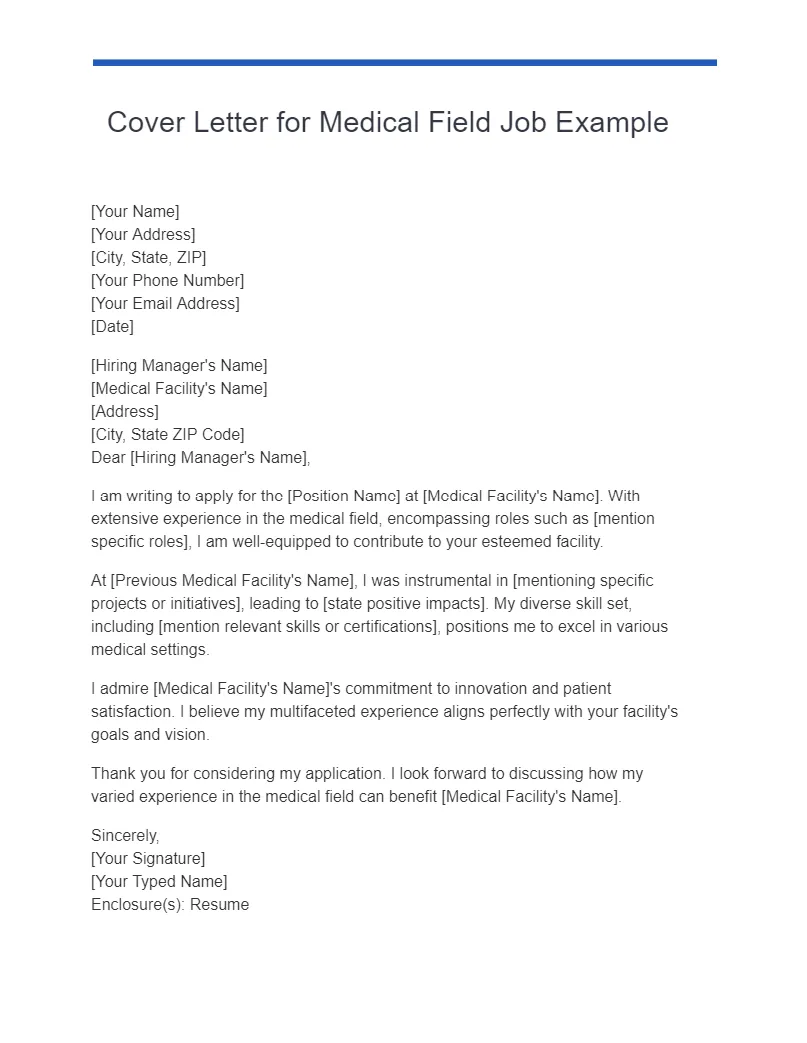
Quantifying your achievements is a highly effective way to make your medical cover letter stand out. Numbers and data provide concrete evidence of your skills and accomplishments, making your claims more credible and impactful. Whenever possible, use quantifiable results to demonstrate your impact. Instead of saying, ‘Improved patient satisfaction,’ write, ‘Increased patient satisfaction scores by 20% through the implementation of a new communication protocol.’ Use metrics to highlight your contributions and demonstrate your value. For instance, you could mention the number of patients you have treated, the percentage of successful outcomes you have achieved, or the amount of money you have saved the organization. When you use metrics, you provide the employer with a clear understanding of your accomplishments and make it easier for them to assess your qualifications.
Using Numbers to Show Your Impact
Using numbers to show your impact transforms your claims from general statements to concrete achievements. It helps employers understand the scope and significance of your contributions. Instead of saying you managed a team, state that you ‘Managed a team of 15 nurses, resulting in a 10% reduction in patient readmission rates.’ Instead of saying you improved efficiency, state that you ‘Streamlined the patient intake process, reducing waiting times by 15 minutes.’ By providing specific numbers, you demonstrate the tangible impact of your work. Quantifying your achievements provides objective evidence of your skills and enhances your credibility as a candidate. Remember to use accurate data and relevant metrics.
Tip 4 Tailor to Each Application
Tailoring your cover letter to each application is crucial for demonstrating your genuine interest in the specific role and organization. Generic cover letters often fail to capture the attention of hiring managers because they lack the personalization that shows you’ve done your research. Before you start writing, carefully review the job description and identify the key requirements, skills, and values that the employer is looking for. Research the organization’s mission, values, and recent achievements. This information will help you tailor your letter to align with their specific needs and goals. In your letter, specifically mention why you are interested in working for that particular organization and how your skills and experiences align with their values. Also, highlight any specific initiatives or projects that resonate with you. This will demonstrate your genuine interest and understanding of the organization.
Researching the Organization and Role
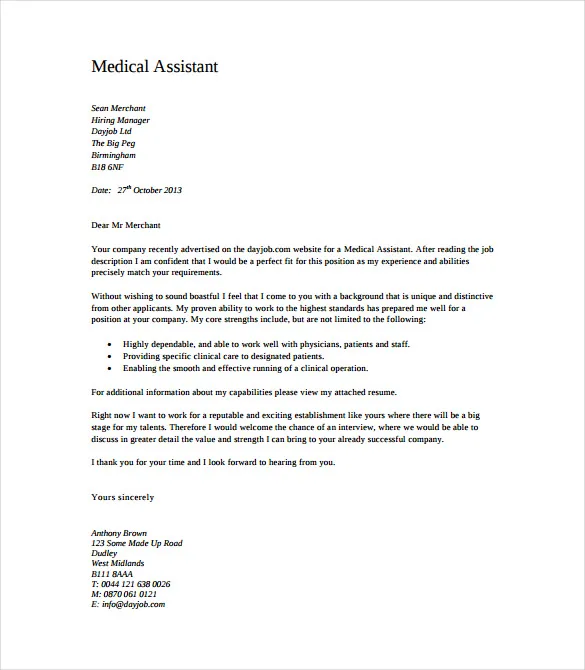
Researching the organization and role is a critical step in writing a successful cover letter. Your research will help you understand the employer’s needs and tailor your letter. Start by visiting the organization’s website to learn about their mission, values, services, and recent accomplishments. Pay attention to any recent news articles, press releases, or social media posts that can provide insights into their current priorities and challenges. Study the job description to fully understand the responsibilities, required skills, and qualifications. Note any specific keywords or phrases used in the description that you can incorporate into your letter. Additionally, research the role itself, including the department you would be working in. By conducting thorough research, you can tailor your cover letter to align with the organization’s specific needs and demonstrate your genuine interest.
Tip 5 Proofread and Edit Carefully
Proofreading and editing your medical cover letter is a critical step to ensure it is professional and error-free. A well-written, polished cover letter demonstrates your attention to detail and commitment to excellence, while errors can undermine your credibility. Always check for grammar and spelling errors. Errors can make your letter look unprofessional and can cause you to lose the job. Make sure you use a grammar checker, but also read the document yourself. Read your cover letter aloud. Reading aloud can help you catch awkward phrasing, repetitive sentences, and other issues. Consider having a friend or colleague review your cover letter. Another set of eyes can often catch errors that you may have missed. By taking the time to proofread and edit carefully, you will present yourself as a meticulous and detail-oriented candidate, increasing your chances of making a positive impression.
Common Mistakes to Avoid
Avoid common mistakes to ensure your medical cover letter makes a positive impression. These mistakes can undermine your qualifications and reduce your chances of getting an interview. Don’t use generic templates. Avoid using a generic cover letter template. Tailor each letter to the specific job and organization. Do not simply restate your resume. Instead, provide context, examples, and tell your story. Avoid spelling and grammar errors. Carefully proofread and edit your letter to catch any errors. Avoid being overly formal or informal. Use a professional tone. Avoid negative language. Focus on your strengths and accomplishments, rather than weaknesses. Never lie or exaggerate your skills and experiences. Being honest and genuine helps build trust with potential employers.
Cover Letter Formatting Best Practices
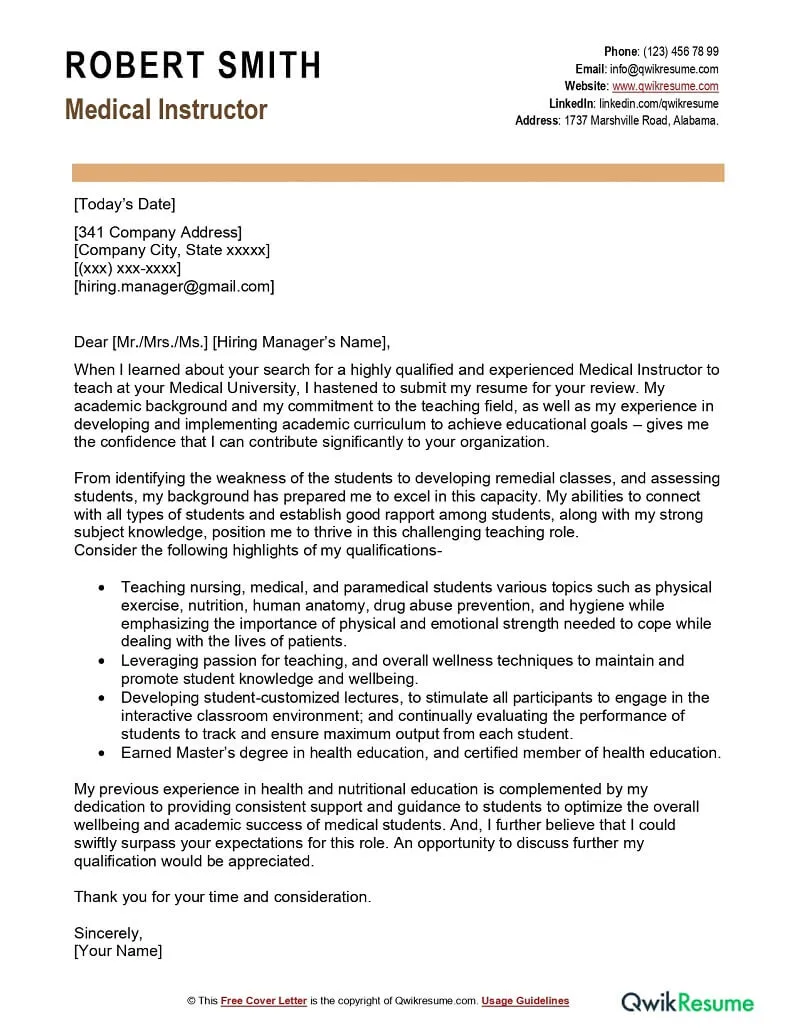
Following cover letter formatting best practices ensures your letter is professional, easy to read, and well-organized. These best practices will help you create a polished and effective document. Use a standard professional font like Arial or Times New Roman. Ensure that the font size is easy to read, generally between 10 and 12 points. Include a clear heading with your contact information and the date, as well as the recipient’s contact information. Maintain consistent formatting throughout your letter, including font style, size, and spacing. Keep the paragraphs concise and focused. The margins on your document should be 1 inch on all sides, creating enough white space to make your letter visually appealing. Following these practices will help create a professional cover letter and greatly improve your chances of landing a job.
